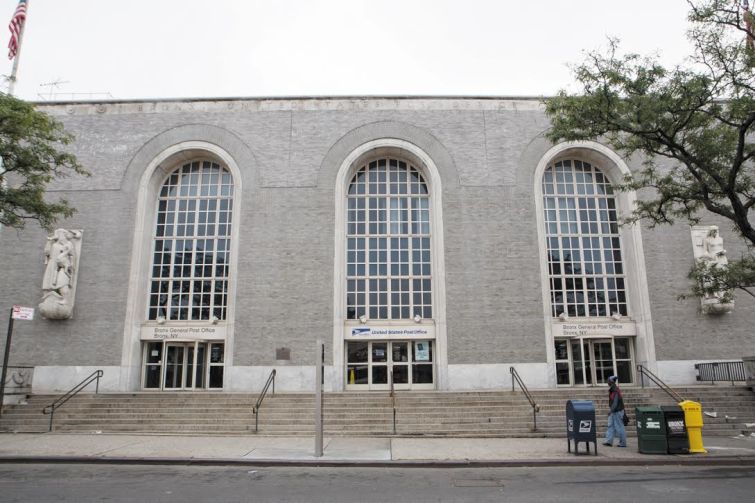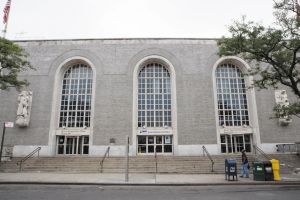The Bronx, NYC’s Final Development Frontier, Booms
By Danielle Schlanger October 8, 2014 1:12 pm
reprints

As novel development sites in Manhattan, Brooklyn and pockets of Queens become scarce, real estate leaders are turning north to the Bronx, a borough largely seen as the final frontier of the city’s real estate landscape.
“Private investment has for too long overlooked the Bronx, and the collective populations who call the Bronx home—including Latinos, African-Americans and Asians—in our opinion have long been underserved by developers,” said Adam Zucker, Youngwoo & Associates’ director of business development. “With an immense waterfront stretch offering city views, numerous access points to Manhattan, and strong public transportation and highway infrastructure, the fundamentals are ripe for development.”
Youngwoo & Associates is one firm that has chosen to capitalize on the dearth of quality shopping in the borough and is betting big on consumer spending by investing in retail space. Last month, the firm announced that it had purchased the Bronx General Post Office at 558 Grand Concourse between East 149th and East 150th Streets, its first development in the borough. Public records show the firm bought the historic building from the cash-strapped U.S. Postal Service for $19 million.
“Several new malls have been developed in the Bronx and I think it’s a real vote of confidence in the market,” said Jonathan Bowles, the executive director of The Center for an Urban Future. “For years, the Bronx was under-retailed because most developers didn’t think they could make a buck in a place [about which people] … had so many negative perceptions.”
At first glance, the Bronx appears to be far from the ideal location for substantial capital investments in retail. With a median household income of $34,300, well below the average statewide, it is the poorest of the five boroughs and has the highest unemployment rate of any county in New York. In 2011, close to a third of the Bronx’s workforce lacked a high school diploma and only 17 percent had earned a college or advanced degree.
However, the Bronx is blessed with a sizable population of 1.4 million people and continues to grow. (If the Bronx were its own city, it would be the fifth most populous nationwide.) Between 1990 and 2011, it experienced the second-highest population growth of all five boroughs, at a rate of over 15 percent, according to New York City data.
“There are a lot of people in the Bronx that may not be wealthy, but they are consumers,” Mr. Bowles emphasized. “They may not be the 1 percent, but they need to buy things and want some options for shopping.”
The Bronx has been underserved by retailers for decades. Residents with cars often travel to Westchester or New Jersey to fulfill their shopping needs, while those without their own personal modes of transportation would rely on stores within walking distance, which were often bodegas and 99 cent shops.
The trend to invest in retail space in the Bronx began in 2009 when Related Companies’ Bronx Terminal Market opened just south of Yankee Stadium and was heralded as the first national retail complex to serve borough residents. The $500 million project is one of the largest private investments ever in the Bronx, and created thousands of jobs. Today, the center, home to the borough’s first BJ’s Wholesale Club, Toys ‘R’ Us and Michael’s, is over 99 percent leased.
“The development Bronx Terminal Market turned a deteriorating blight on the area and former brownfield site into a vibrant center for the community offering residents of the Bronx the same shopping opportunities that the suburbs and the other boroughs have enjoyed for years,” said Glenn Goldstein, the president of Related Retail and developer of the Bronx Terminal Market.
“We are bullish on the Bronx and continue to explore opportunities throughout the borough,” Mr. Goldstein said.
In August, the Mall at Bay Plaza, a property conveniently situated in Co-Op City opened at 200 Baychester Avenue by the intersection of the Hutchinson River Parkway and I-95, where an estimated 250,000 cars pass through daily. Sam Shalem’s Prestige Properties invested close to $300 million in construction costs on the shopping complex, which boasts over 100 stores and restaurants spread across 780,000 square feet.
“I recognized a huge hunger for quality fashion tenants, which were lacking in the Bronx,” said Mr. Shalem, the chairman and CEO of Prestige Properties. “That was the main reason why we were able to attract tenants like Michael Kors, Gap, Express and H&M. Those tenants weren’t in the Bronx before.”
Mr. Shalem expressed confidence in the future of the Bronx.
“The Bronx is on a huge upswing,” he said. “There’s no question about it. You can see the quality of the building that we put up and the huge investment that we made. We are big believers and big investors in the Bronx.”
Youngwoo & Associates plans to target the 13,000 students in the area due to the post office’s proximity to Hostos Community College, as well as the thousands of other professionals employed by nearby Lincoln Medical Center. The building sits on top of three subways—the station is the busiest daily stop in the borough—and the bus stops outside the building see over 20,000 riders a day.
The firm doesn’t foresee the post office project being its last foray in the borough.
“We hope this is the beginning of more projects to come,” Mr. Zucker said.
The Bronx’s leadership has also taken proactive measures to promote growth. It has upzoned corridors like the lower Grand Concourse, the Harlem River waterfront and Webster Avenue from Fordham Road through the Woodlawn neighborhood. It is also pressing the governor to approve a measure financing Metro-North stations in four areas lacking public transportation: Hunts Point, Parkchester, Morris Park and Co-op City. That will in turn increase the demand for amenities in these areas. If all goes according to plan, the state will finance these hubs by the end of this decade.
Borough President Ruben Diaz, Jr. stressed that the Bronx has learned from the building booms in Brooklyn, Harlem and Long Island City, and has also taken note of those areas’ shortcomings in facilitating strategic growth.
“The borough is upzoning and developing housing in pockets where there is currently no [strictures] to ensure no one is being forced out,” Mr. Diaz said. (He was careful to avoid slapping the dreaded “gentrified” label on any part of his district.)
Mr. Diaz added that where major development is occurring the borough president’s office and the Bronx Overall Economic Development Corporation (BOEDC) encourage subcontractors to work with other Bronx businesses by leveraging funds.
Though notable in numbers, Bronx development is not limited to retail. A handful of high-profile sports complexes are under construction in the borough. Donald Trump’s Ferry Point Golf Course at the foot of the Whitestone Bridge is scheduled to open in 2015 and will host Barclays’ PGA Tour in 2017. Crotona Park will soon welcome the Cary Leeds Center for Tennis and Learning, which will include two exhibition tennis courts, 20 adjacent tennis courts and a 12,000-square-foot clubhouse. And the Kingsbridge National Ice Center (KNIC) will reconfigure the vacant Kingsbridge Armory into the world’s largest indoor ice center, featuring nine year-round indoor regulation size ice rinks.
When asked if any neighborhood showed particular promise, Mr. Diaz said developers “need to start paying attention to Port Morris.”
“If you look at Port Morris when you come over the Willis Avenue Bridge, it’s already a trendy neighborhood with art stores and boutiques, and a lot of great eateries. Many of the hipsters have moved into lofts,” he said. “This is the time for people to come in and invest.”
Yet, the Bronx still cannot claim the same level of intrigue among many tenants as other swaths of the city.
Although the amount of office space in the borough is growing—in 2011, there was roughly 8.7 million square feet—“it’s not like tech companies are turning to the South Bronx because of cheap real estate and convenience to Manhattan,” Mr. Bowles said. “We’re not quite there yet.”
But with crime in the Bronx dropping precipitously, with 2013 recording the lowest murder rate in 50 years, more developers could be lured by the area’s untapped promise.
“[The Bronx] has become safer, and as a result more inviting for outsiders and at the same time more welcoming for neighborhood residents,” Mr. Zucker said.
“I think the future for the Bronx could be extremely bright,” Mr. Bowles concluded.
Mr. Diaz thinks his borough has already bloomed.
“Folks need to know that we’re not the Bronx of the ’70s, ’80s and early ’90s anymore,” Mr. Diaz said. “We are the new Bronx.”


